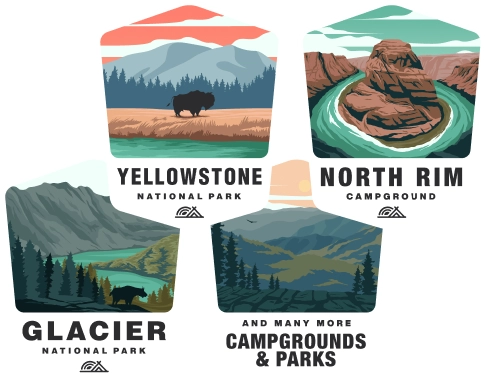Camping at Quartzville Creek Wild and Scenic River
Overview of Quartzville Creek
Quartzville Creek is a tributary of the Santiam River in the state of Oregon, and it is acclaimed for its scenic beauty and the recreational opportunities it offers. In 1988, a 12-mile stretch of Quartzville Creek was designated a National Wild and Scenic River, which helps to preserve its free-flowing condition, water quality, and the natural environment alongside its banks.
Location and Access
Quartzville Creek is located in the western part of Oregon, east of the city of Salem, in the Willamette National Forest. A major access point for visitors is along the Quartzville Road, also known as Forest Service Road 11, which runs parallel to the creek. Visitors can reach this area by taking Highway 20 east from Albany, or north from Sweet Home, and then turning onto Quartzville Road.
Activities
Fishing: Quartzville Creek is renowned for exceptional fishing opportunities, particularly for fly fishing. The creek is inhabited by a variety of fish including rainbow trout, cutthroat trout, and kokanee salmon. Fishing regulations must be followed, including those specific to the wild and scenic portions.
Camping: There are multiple campgrounds and dispersed camping areas along Quartzville Creek where campers can stay. These range from developed campgrounds with amenities to primitive sites for those seeking a more rugged outdoor experience.
Gold Panning: Recreational gold panning is a popular activity in Quartzville Creek due to its historical association with the Oregon Gold Rush. Hobbyists can try their luck at finding small flakes or nuggets while respecting the guidelines for responsible mineral collection.
Whitewater Rafting and Kayaking: The creek features sections with rapids that are suitable for whitewater rafting and kayaking, making it a destination for thrill-seekers. Rapids range from Class II to more challenging Class IV, depending on water levels and sections of the creek.
Camping Guidelines
Respect Dispersed Camping Rules: When camping outside of developed campgrounds, practice Leave No Trace principles, and ensure you are at least 200 feet away from the water to protect riparian areas.
Campground Etiquette: Use designated fire rings, keep noise to a minimum, and be mindful of your impact on the natural surroundings and other campers.
Fire Safety: Check for fire restrictions before lighting a campfire, and never leave your fire unattended. Make sure all fires are completely extinguished before leaving your campsite.
Waste Disposal: Pack out what you pack in, and use proper waste disposal methods. In developed campgrounds, use the facilities provided, and in remote areas, bury human waste at least 6-8 inches deep and 200 feet away from any water sources.
Regulations and Permits
Visitors need to be aware of and comply with regulations set forth by the managing agencies. This may include:
- Obtaining required permits for certain activities or overnight stays in some areas.
- Following fishing regulations, such as catch-and-release rules or limits on the size and number of fish that can be taken.
- Adhering to rules about where and when gold panning is allowed.
- Observing wildlife and plant life without disturbing them.
Safety Considerations
- Always be prepared for changing weather conditions and pack appropriate gear.
- Be aware that cell phone reception may be limited or non-existent.
- Exercise caution when engaging in water-based activities, and use life jackets when boating or rafting.
- Be aware of the potential for forest fires during dry seasons and adhere strictly to fire regulations.
Environmental Protection
- Avoid introducing or transporting non-native species by cleaning gear and vehicles before and after your visit.
- Participate in or support conservation efforts to maintain the integrity of the ecosystem.
Summary
Camping and recreation along Quartzville Creek provides a wonderful chance to enjoy the natural beauty and outdoor activities available in the Oregon wilderness. By following the guidelines for camping, respecting the environment, and heeding safety advice, visitors can ensure a memorable and responsible experience in this wild and scenic river area.
